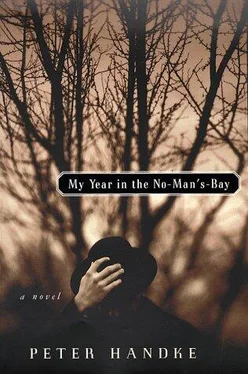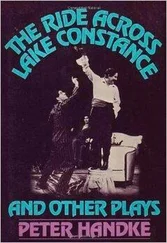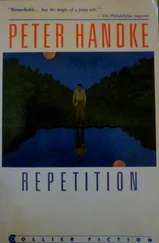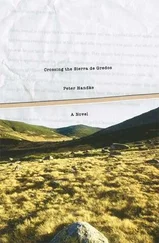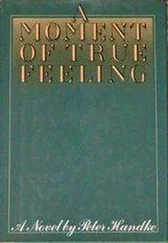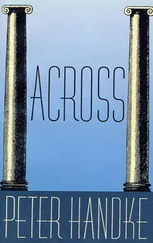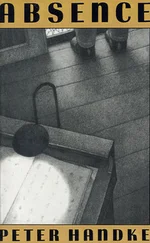And sometimes I allowed the mistakes to stand; who could say that the telephone booth I had hallucinated onto a certain street corner would not in fact be installed there the next day?
Nowhere else have I seen such houses as those in the bay? Yes, and I have never yet seen houses like those here.
And again it was only during my writing year that I began to distinguish: it is not merely because of the particular building style. It also has to do with their location in this remote spit of a settlement, cutting deep and narrow into the forest. (The solitude or remoteness helped create this world — and what besides?) Not a house there which, observed from a distance — and the majority reveal themselves thus — does not have as a background, high above the roofline, a wooded ridge, which then extends over the roofs of the other houses as well.
The chain of hills round about not only provides the frame for the houses of the bay, but even more forms part of their image. Without it, marking the curved horizon floating gently above them, the houses would stand as if alone, each an incomplete phenomenon, so to speak. Without this omnipresent background of wooded hills the settlement would lack something that constitutes the unique solidarity, if not of the inhabitants, then of the dwellings there.
It has sometimes happened that I have looked out my window and pictured the wooded heights as gone from behind the near and more distant gables in the neighborhood, the eastern chain of hills with the transmitter, the southern slope, called Eternal Slope, of Velizy and the Poussin Meadow in between, the western heights, now at the beginning of November already shrouded in snow clouds; and each time a sense of uneasiness, almost of horror, has seized me at such hilllessness round about, with all the buildings in the fore- and middle ground continuing on into unbounded, drizzly, identical plains.
No. Even by themselves the houses of this region, without the green and gray arc of hill forests above their roofs, are a force, at least many of them. Even on the plains they would assert themselves, and would form lovely and spirit-lifting horizons, one in conjunction with the other, as well as with the front and back yards, around corner after corner, off into mirror-polished depths.
And again, only as a result of this year have I recognized that the city of my childhood longings was not exotic but one exactly like the settlement here in the bay; that those white cities I later chased after through the decades were not the right thing. Or: the White City is nothing for me.
The bay also has white houses, but they are rare, and in contrast to the White City, which begins to glow only from afar, here the last white disappears at a distance, or one has to search for it. A century ago there was only one such building, which was also called La Maison Blanche. The façades display concealing colors, so to speak. Although yellow and red, even purple paint also occurs, nowhere does it make an impression of brilliance, or even of colorfulness. Yet the houses do not seem camouflaged in any way, but rather embody, in their distinctness and clarity, the fact we know as a house, and these house-facts stand, according to Karl Valentin, out in the open.
But isn’t it also thus in other suburbs? Perhaps. Except that the houses here appear more forcefully, precisely in that they are almost without exception smaller: if just as broad as elsewhere, they are lower; if as high, decidedly narrower. And since, on the other hand, the yards are often larger than elsewhere, the space between houses is entirely different from there. So much more air is visible, no matter how narrow the gaps, between and above the houses’ smallness.
It was this play of staggered in-between spaces that first brought back to me childhood images of a place of the future and rendered them concrete. And the play developed even more drawing power from other unique characteristics of the bay’s buildings. Almost every one of the thousand little houses, strangely angular or strangely spreading, had a form different from the one next door, and when two similar ones did occur, it was as rare as twins, and they always turned up far apart. Besides, they did not stand in a row anywhere, but rather each at an angle to the next, the barracks-flat one close to the street, the next one, towerlike, in back at the end of a bowling-alley-length vegetable garden, and then vice versa, and so on. And at every step you found the façades pointing in different directions, not only around the one pond or the one round, always unpeopled plaza called Place de la Concorde.
The yellow-and-gray sandstone, that common suburban building material, did not occur in the bay all along a street as elsewhere, but in isolation, likewise buildings of red brick and pale limestone, and the few stuccoed houses displayed from house to house not only different shades but also different pebbliness in their textures. Thus far I have encountered one or two whose walls reveal a pattern like the first application of mortar with the trowel, and just as many, each time again at locations far apart, where the stones, cut into hexagons, were accordingly laid in nature’s basic pattern, most noticeable otherwise in the cracks the earth develops during a drought.
Otherwise the houses tended to have no decoration, except for the chimney pots, often a veritable collection on a roof, one like a pretend factory smokestack with an upside-down flowerpot on top, the one next to it a many-winged miniature pagoda: hamlets in their own right. And on two southern façades thus far, separated by several streets, sundials revealed themselves to me, so unusually tiny — like insurance company decals — that they were a discovery if for no other reason. And on a garden wall, that row of concrete blocks, set on edge, in the form of dice whose black dots had meanwhile been whitewashed, and on a house wall a relief representing billiard balls and a queue.
All the houses in the bay huddled together in the broad hollow surrounded by wooded hills; none stuck up from a rise. None had a tower, an oriel, or turrets, or imitated a palace like quite a few in the neighboring suburbs, and none could be called a “villa,” except by a real estate agent. The one house that was somewhat more imposing resembled a forester’s lodge; the one, the only one, with an arched portal had probably once been a rectory. And in distinction to the other bays in the Seine hills, where one can repeatedly see, when out walking in the cookie-cutter side streets, a rounded Romanesque form here, a Gothic pointed cap there, in none of the established buildings here could I discover a single imitation of another building style, and probably nothing resembling a style at all.
For the architectural style of the Paris suburbs, the expression pavillon has been introduced. But for most of the local lodgings here that is not applicable. They look too unplanned, too little thought out. They are simply residences, or buildings of convenience; yet there is nothing provisional or hasty about them either. They have been standing and existing there in the forest bay since long ago, and are meant to last. I keep seeing them anew, singly and all together, as classic, less in the sense that they are timeless than that they are original, and then, too, in that they gave me a concept of everywhere, not just any old one, but rather a central one, particularly rooted in that place, indeed animated by it.
And I would never have assigned the population there to any particular people or any specific social class. A short while ago I read the remark of a famous architect from the metropolis beyond the hills, who, on the subject of the pavilions in the suburbs, whether ironically or seriously, praised the good taste of the petty bourgeois revealed in them. I do not know. At any rate I have never had any such thought in connection with the inhabitants of those classic residences in the bay here, to my delight.
Читать дальше
